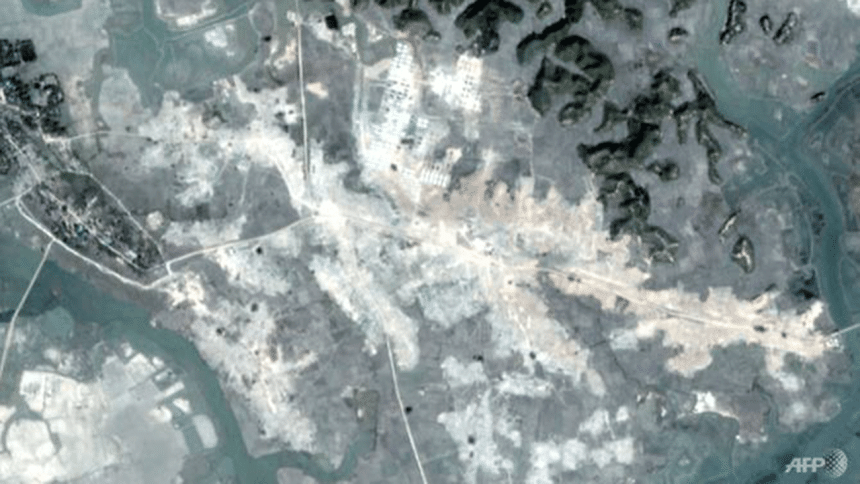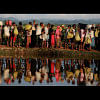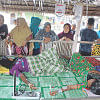Myanmar bulldozing Rohingya villages: HRW
New satellite imagery reveals the Burmese government has been bulldozing scores of depopulated Rohingya villages in northern Rakhine State, Human Rights Watch said today.
The United Nations Security Council, the UN and its agencies, and Burma's donours should demand the Burmese government immediately halt the demolition of Rohingya villages, which should be treated as crime scenes that should be preserved until the UN Fact-Finding Mission is given access to the area to carry out investigations, it said.
The revelations come as it is going to be six months that the massive influx of the Rohingya began, creating the fastest growing refugee crisis in the Bangladesh-Myanmar border, which saw fleeing of nearly 700,000 Rohingyas from Myanmar's Rakhine state since August 25 last year.
The global rights watchdog said today since late 2017, the Burmese government has cleared at least 55 villages of all structures and vegetation, using heavy machinery. Most of these villages were among the 362 villages completely or partially destroyed by arson since August 25, 2017, during the security forces' ethnic cleansing campaign against the Rohingya.
However, the satellite images show that at least two of the villages demolished were previously undamaged by fire and likely inhabitable. Hundreds of buildings have been demolished in 10 other villages partially destroyed by arson, says a statement of the HRW.

"Many of these villages were scenes of atrocities against Rohingya and should be preserved so that the experts appointed by the UN to document these abuses can properly evaluate the evidence to identify those responsible," said Brad Adams, Asia director of HRW.
"Bulldozing these areas threatens to erase both the memory and the legal claims of the Rohingya who lived there."
Human Rights Watch says it could not independently verify if any of the destroyed villages were inhabited when the demolition began. Satellite imagery reviewed by Human Rights Watch suggests that the demolitions are ongoing.
The satellite images show that the initial demolition of heavily damaged or destroyed buildings in northern Rakhine State began in Maungdaw town in November 2017. This was followed by a pause of approximately one month.
"In early January 2018, clearance operations resumed in villages south of Maungdaw town along the coast, and then rapidly spread northward from where the demolition began," HRW said.
"The government's clearing of dozens of villages only heightens concerns about Rohingya families being able to return home," Adams said.
"Deliberately demolishing villages to destroy evidence of grave crimes is obstruction of justice. Donor governments should ensure they don't provide any direct or indirect support that would hamper justice or assist those responsible for ethnic cleansing in their efforts to pretend the Rohingya do not have the right to return to their villages in northern Rakhine State," he said.

 For all latest news, follow The Daily Star's Google News channel.
For all latest news, follow The Daily Star's Google News channel. 








Comments